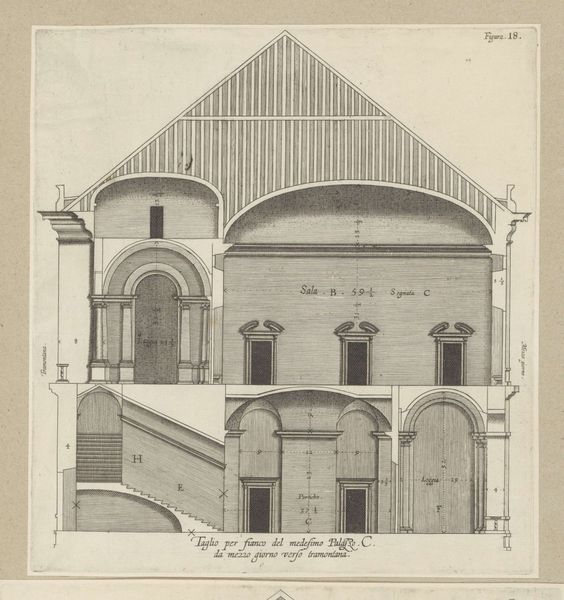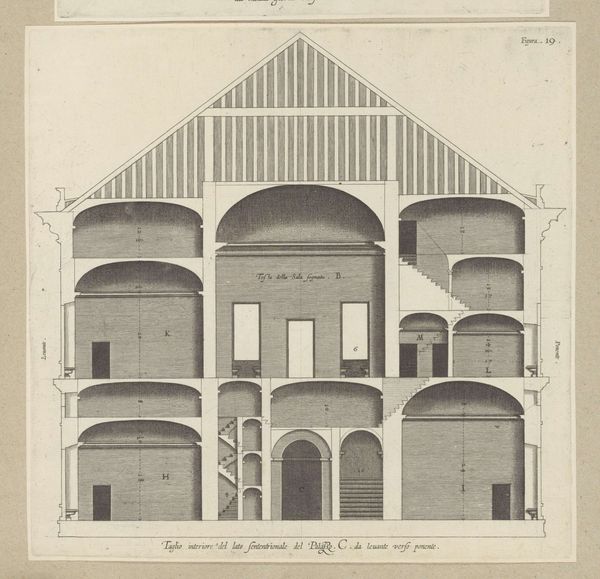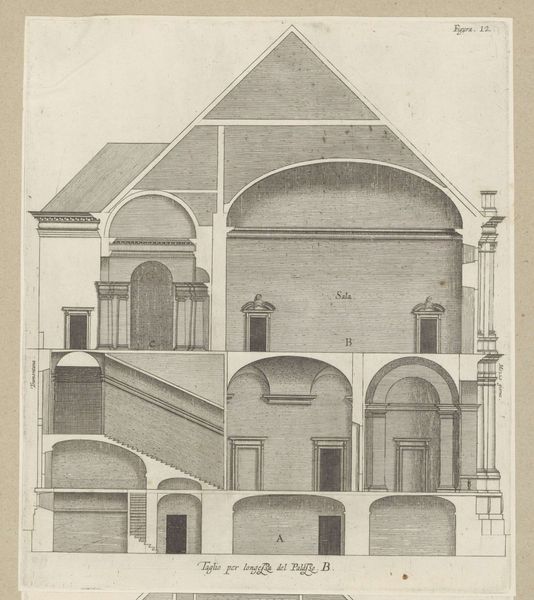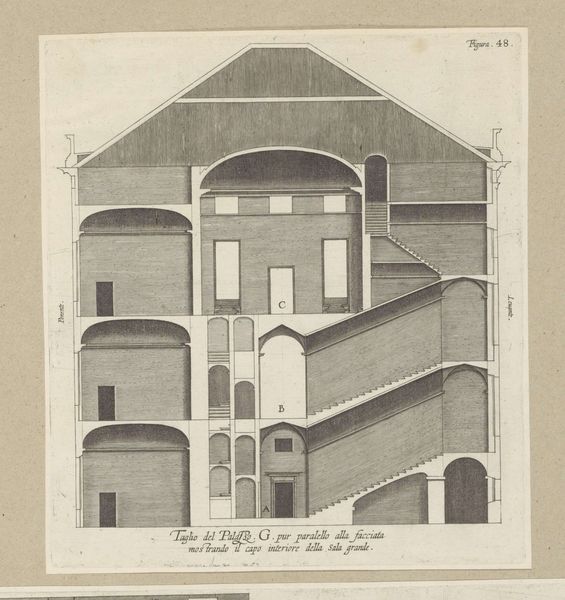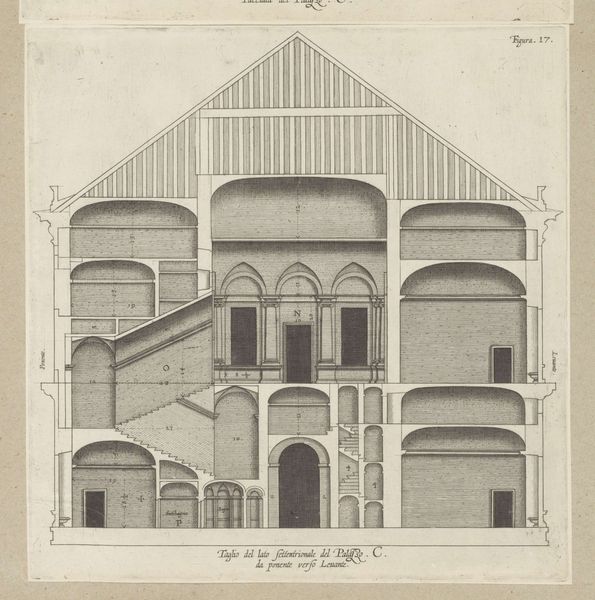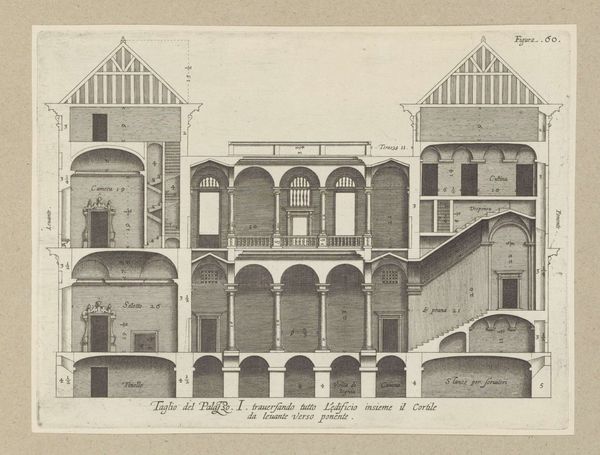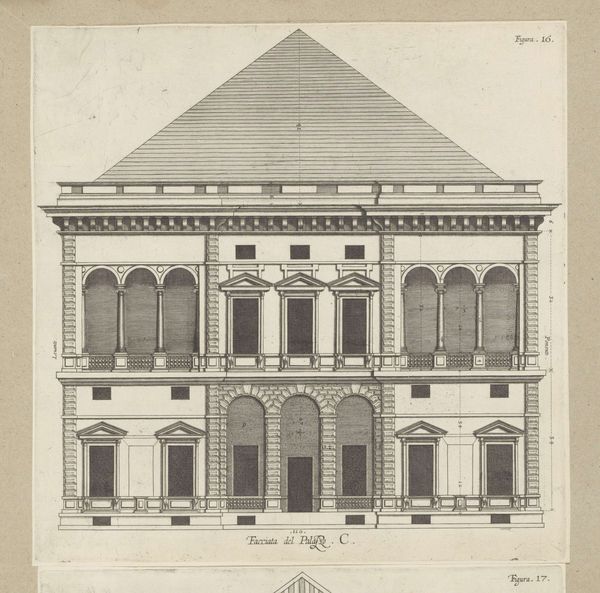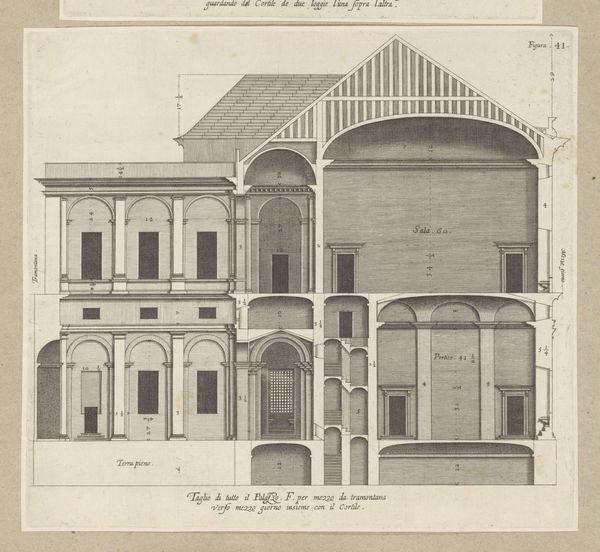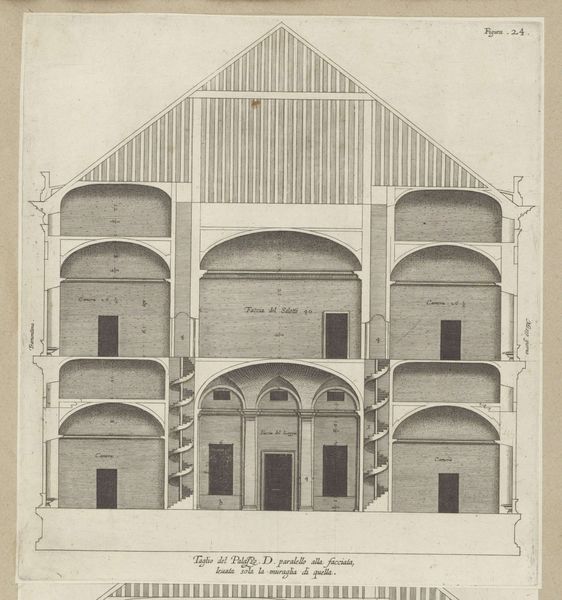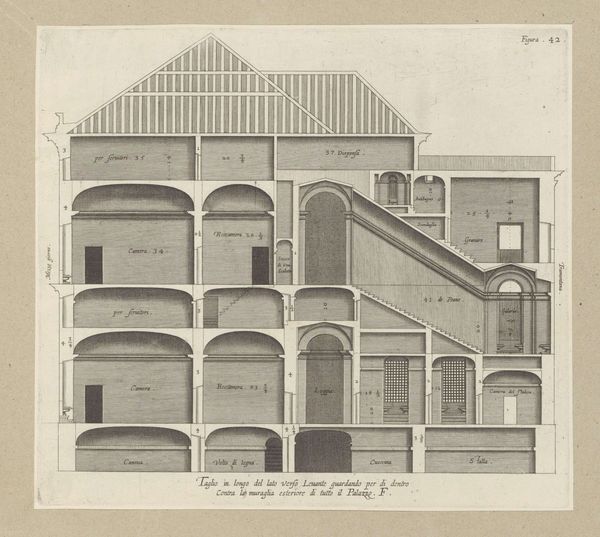
drawing, print, engraving, architecture
#
drawing
#
baroque
# print
#
perspective
#
geometric
#
line
#
cityscape
#
engraving
#
architecture
Dimensions: height 201 mm, width 212 mm, height 583 mm, width 435 mm
Copyright: Rijks Museum: Open Domain
Curator: The work before us, rendered in 1622, is titled "Langsdoorsnede van het Palazzo Rostan Raggio te Genua," attributed to Nicolaes Ryckmans. It's an architectural drawing, showcasing a longitudinal section of the Palazzo using engraving techniques. Editor: It strikes me immediately as rather austere, even stark. The precise lines create a feeling of distance, almost like observing an archaeological dig. The absence of color enhances the sense of detachment. Curator: That starkness is deliberate. Ryckmans, through this engraving, adheres to the Baroque fascination with scientific accuracy combined with the spectacle. Note how he prioritizes revealing the structural integrity of the building, making this more than a simple depiction of a facade. The image becomes a statement on architectural ambition and engineering prowess. Editor: Indeed. The emphasis on line and geometric forms is striking. I find myself focusing on the rhythmic repetition of the arches and windows and the contrasting textures implied by the hatching that models light and shadow, adding a strange almost sculptural sense of mass. Curator: Precisely. And think of the Palazzo itself, a Genoese family's attempt to project power and wealth. Prints like this one helped spread architectural ideas. Notice also how it functions didactically; look at all of those notes and the ways elements and architectural dimensions are highlighted and noted. It’s a design blueprint, intended for circulation among other builders, artisans, and wealthy patrons alike. Editor: I appreciate the point about circulation because one has to remember that perspective as a pictorial construct was, in its day, an exciting development in painting and drawing that allowed novel ways of presenting forms and figures in space. But I’m not sure whether its use here necessarily results in a captivating visual piece of artwork as such, which is probably not the point either. Curator: Well, I'd contend that Ryckmans uses linear perspective not merely as a tool for technical representation, but as a signifier of control and mastery over space, key themes in Baroque aesthetics and power structures. This piece offers a fascinating glimpse into the societal values reflected in architecture of the time. Editor: I’m more compelled now that I see how it showcases those aspects. Curator: It’s an image which enables us to probe into the ways spaces dictate behaviors, mirror social orders, and broadcast ideologies. Editor: A final consideration is that it allows viewers to appreciate form, function, and social dynamics through a lens grounded in rigorous construction and planning. Curator: Absolutely; in its design we come face-to-face with the values of the world in the Baroque period.
Comments
No comments
Be the first to comment and join the conversation on the ultimate creative platform.
